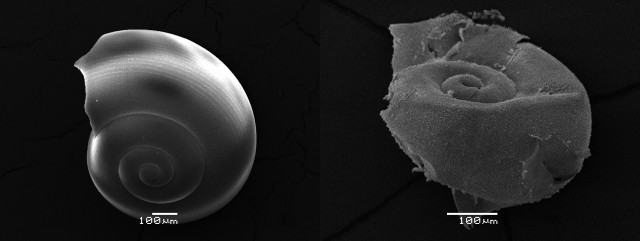Sea butterflies already feeling the sting of ocean acidification?
Ars Technica » Scientific Method 2012-11-27

Climate change is often treated like something that won’t be harmful for many decades. The truth is that we’re already feeling the effects of greenhouse gas emissions—and they’ll become more and more prevalent as time goes on. Take ocean acidification—the change in ocean chemistry due to the absorption of CO2 from the atmosphere. The degree of acidification is already beyond the likely range of natural variability of the past thousand years. Acidification has already been linked to impacts on marine life, as a report on a commercial oyster hatchery in Oregon indicated earlier this year.
One of the regions most sensitive to acidification is the Southern Ocean surrounding Antarctica. Lots of deep ocean water rises to the surface here, bringing with it the nutrients that fuel plankton blooms and a feeding frenzy that goes right up the food chain.
That deep water hasn’t seen the surface in a thousand years, and it contains high concentrations of dissolved CO2. In the same way that breathing into a small bag quickly makes the air inside it “stale” (ignoring, for the moment, the garlic you had for lunch), CO2 accumulates in the deep ocean over time. That addition of CO2 makes the water a little more acidic, similar to the way that human emissions are affecting the shallow ocean.
Read 10 remaining paragraphs | Comments